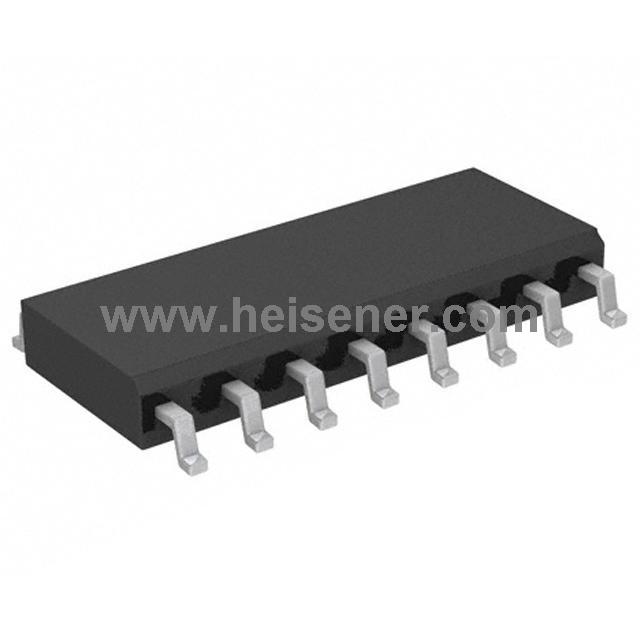
ICL8038CCPD Introduction
The ICL8038CCPD is a versatile waveform generator IC that can produce highly accurate sine, square, triangular, sawtooth, and pulse waveforms with minimal external components. With a frequency range that spans from 0.001 Hz to over 300 kHz, it allows for flexible frequency selection via resistors or capacitors and supports frequency modulation and sweeping with an external voltage.
The ICL8038 is manufactured using advanced monolithic technology, including Schottky barrier diodes and thin-film resistors, ensuring stable output across a wide temperature range and supply variations. Additionally, the IC can be integrated with phase-locked loop circuitry, which helps reduce temperature drift to under 250 ppm/°C, making it a reliable choice for high-precision signal generation applications.
ICL8038CCPD Pinout

Pin 1 (SINE WAVE ADJUST): Adjusts the sine wave output waveform for improved accuracy.
Pin 2 (SINE WAVE OUT): Outputs the sine wave signal.
Pin 3 (TRIANGLE OUT): Outputs the triangle waveform.
Pins 4 & 5 (DUTY CYCLE FREQUENCY ADJUST): Used to adjust the duty cycle and frequency of the output waveform.
Pin 6 (V+): Positive power supply input.
Pin 7 (FM BIAS): Provides the bias for frequency modulation.
Pin 8 (FM SWEEP INPUT): Allows external voltage control for frequency modulation and sweeping.
Pin 9 (SQUARE WAVE OUT): Outputs the square wave signal.
Pin 10 (TIMING CAPACITOR): Connects to an external capacitor to set the timing and frequency of the waveforms.
Pin 11 (V- or GND): Negative power supply or ground connection.
Pin 12 (SINE WAVE ADJUST): Additional sine wave adjustment for waveform shape accuracy.
Pins 13 & 14 (NC): Not connected.
ICL8038CCPD Symbol

ICL8038CCPD Footprint

ICL8038CCPD 3D Model

ICL8038CCPD Functional Diagram

ICL8038CCPD Test Circuit

ICL8038CCPD Detailed Schematic

ICL8038CCPD Specification
| Parameter | Specification |
| Supply Voltage (V+ to V-) | 10V to 30V |
| Output Waveforms | Sine, Square, Triangle, Sawtooth, Pulse |
| Frequency Range | 0.001 Hz ~ 300 kHz |
| Frequency Stability | Less than 250 ppm/°C |
| Output Amplitude | Up to 5V peak-to-peak |
| Temperature Range | 0°C ~ 70°C |
| Frequency Modulation | Supported via external voltage |
| Duty Cycle Adjustment | Adjustable via external resistors/capacitors |
| Package Type | 14-Pin DIP |
ICL8038CCPD Features
Low Frequency Drift with Temperature
Low Distortion
High Linearity
Wide Frequency Range
Variable Duty Cycle
High Level Outputs
Simultaneous Sine, Square, and Triangle Wave Outputs
Easy to Use
ICL8038CCPD Applications
Function Generators
Frequency Synthesizers
Audio Generators
Sweep Generators
Pulse Width Modulation (PWM) Circuits
Phase-Locked Loops (PLL) and Signal Conditioning
ICL8038CCPD Package
The ICL8038CCPD is available in a 14-pin dual in-line package (DIP), a common package form factor that facilitates use on breadboards and through-hole circuit boards. The package features two rows of pins, typically spaced a standard 2.54 mm apart, ensuring easy and convenient mounting and connections in circuit designs.
Each pin of the ICL8038CCPD package corresponds to a specific function, including output waveform, frequency adjustment, power supply pins, etc., simplifying the wiring layout. Its robust package is suitable not only for experimentation and prototyping, but also for long-term stable real circuit applications.

FAQs
What is the ICL8038CCPD used for?
The ICL8038CCPD is a versatile waveform generator capable of producing sine, square, triangular, sawtooth, and pulse waveforms. It is commonly used in signal processing, function generators, audio applications, and testing equipment.
What are the power supply requirements for the ICL8038CCPD?
The ICL8038CCPD typically requires a dual power supply, with a positive voltage (V+) and a negative voltage or ground (V- or GND) for operation.
How stable is the output of the ICL8038CCPD?
The output of the ICL8038CCPD is stable over a wide range of temperature and supply voltage variations. It is designed to have low temperature drift, especially when interfaced with phase-locked loop (PLL) circuitry.